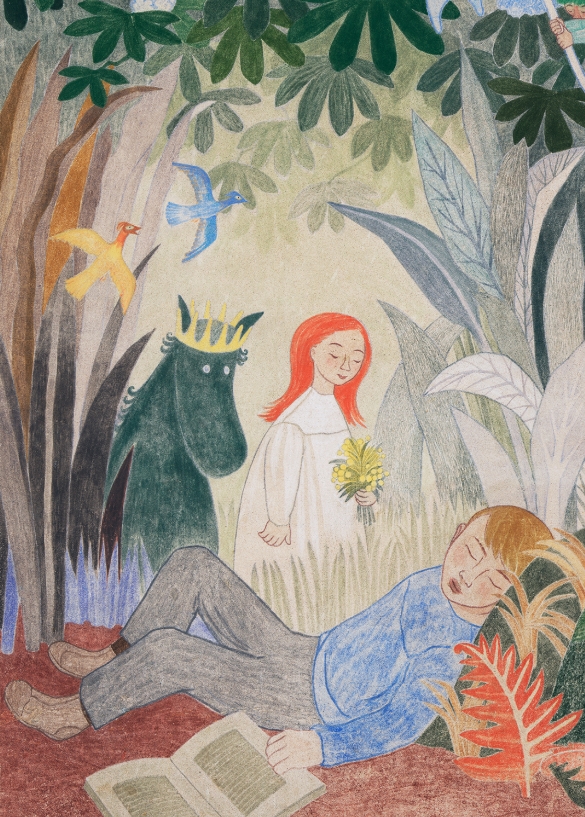Tove Jansson – Paratiisi presents Tove Jansson’s (1914–2001) public works assembled as an exhibition for the first time. The exhibition focuses on Jansson’s commissioned works in public spaces in the 1940s and 1950s. It presents the full extent of the artist’s lesser-known mural production, from smaller decorative paintings to monumental works. Highlights include six large charcoal drawings that allow you to get a unique touch into the artist’s creative process. The sketches found in Tove Jansson’s studio have never been presented to the public before.
Tove Jansson’s public paintings open up views of the artist’s inexhaustible fantasy world. The exhibition also tells about the artist’s dreaming and striving for an idyll amid the challenges caused by the war.
I have never dreamed and planned as much as in these years. I wasn’t kidding – but because it has been an absolute necessity, stated Jansson in a letter sent to his friend Eva Konikoff in October 1944.
Tove Jansson’s public commissioned works were related to the reconstruction period after the Second World War, and many of them were completed in environments built for children or young people: Kotka kindergarten (1949) and vocational school (1952) and Kiila’s Swedish-speaking national school in Karjaa (1953). Another typical environment is even the spaces intended for rejoicing: Hamina’s Seurahuone (1952) and staff restaurants at the Strömberg factory (1945), the City Hall Cellar of the City of Helsinki (1947) and the headquarters of the Nordic Union Bank (now Nordea) (1954).
Tove Jansson painted her laborious public works during her intense creative period, when she held her first solo exhibitions at Bäcksbacka Taidesalong and published her first Moomin books. In the exhibition, Jansson’s living environment opens up through wartime descriptions and Helsinki landscapes. In addition, the works and illustrations that led him to become the author of public paintings will be presented.
Selections from HAM’s core collection, Leonard and Katarina Bäcksbacka’s collection, photographs, video films and the recently completed documentary about the altar painting of Teuva Church give you the opportunity to immerse yourself in Tove Jansson’s mental landscape. The documentary is shown on Saturday afternoons and Sundays. The exhibition architecture designed by Linda Bergroth emphasizes Jansson’s creative process and brings out the monumental scale of the public works.
The exhibition also celebrates the Moomin 80 anniversary. It will be 80 years since the book Småtrollen och den stora översvämningen (The Moomins and the Great Flood) was published in 2025. Tove Jansson used the Moomins as her trademark in several of her murals, and in a few of the works the characters are spectacularly happy.
In connection with the Tove Jansson – Paratiisi exhibition, a trilingual book of more than 170 pages bearing the name of the exhibition will also be published, which presents the artist’s lesser-known mural production in its entirety with extensive artwork and photographs. The publication was edited by the curator of the exhibition, HAM’s Heli Harni and freelance writer Tuija Huovinen . In addition to Harn, the publication has been written by FT., dos. Sirke Happonen , FT Asta Kihlman and FT Johanna Ruohonen .




